7 Best Calf Raise Variations (with Pictures!)
Calves are possibly one of the most under-trained muscles in the body - but that doesn’t mean a plethora of different exercises exist to do so, with the most iconic of these being the calf raise.
Even if you are already familiar with the conventional calf raise, quite a number of different variations exist so as to target the calves from different angles, or even with different forms of stimulus; Each should be carefully considered when structuring a training program.
While there is no substituting the conventional calf raise, exercises like the seated calf raise, machine calf raise and reverse calf raise all target the calves in different manners.
For a truly comprehensive calf workout, we suggest using at least two out of the following exercises.
What is a Calf Raise?
A calf raise is simply a calf muscle isolation exercise performed for the purposes of developing greater strength and mass in the gastrocnemius and soleus.
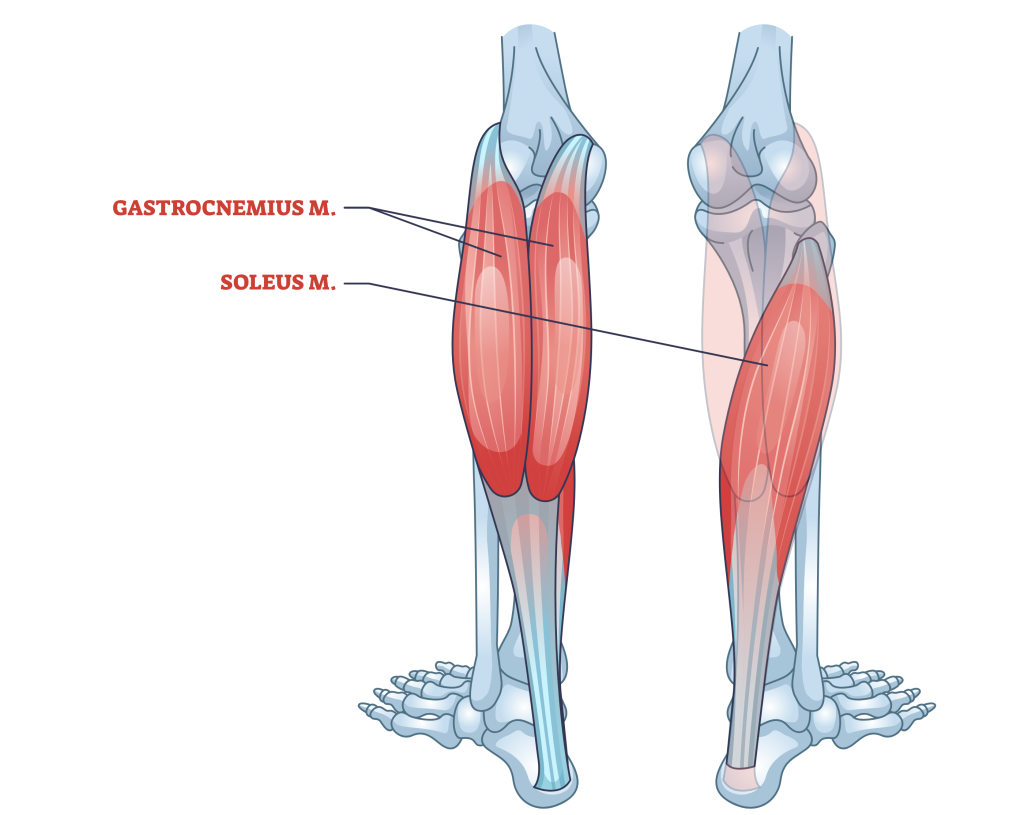
Depending on the goals of the lifter, calf raises can either be performed unweighted or with the addition of a number of different external resistances.
While bodyweight will allow for the most volume to be performed, more advanced athletes may wish to make use of resistance machines or dumbbells to up their workout.
The majority of calf raise variations change with specific part of the calves being emphasized, or otherwise the intensity to which they are recruited.
Calf Raise Variations
1. The Conventional Standing Calf Raise
The “baseline” calf raise variation - conventional calf raises involve the lifter being in a standing position and rolling onto the balls of their feet as they fully work their calf muscles.
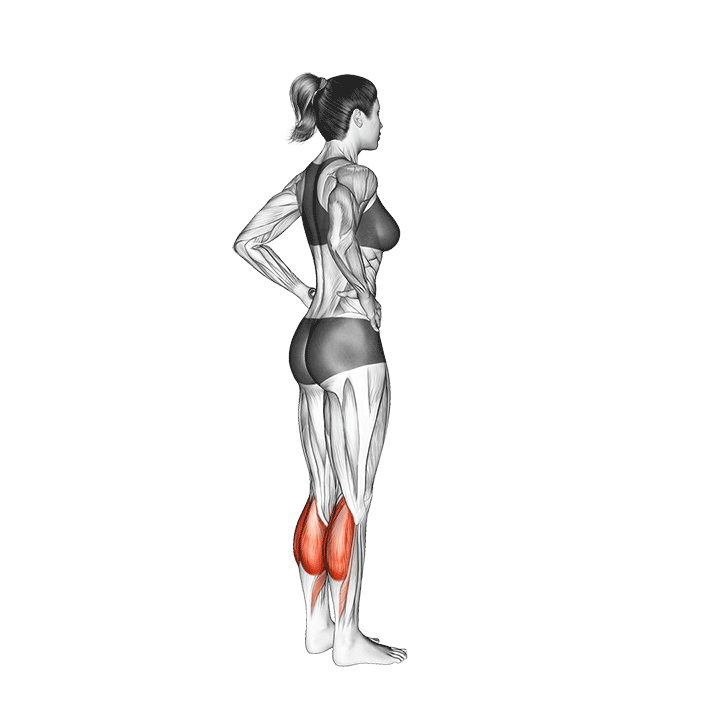
This particular variation is known for both its simplicity and its ease of execution, as it requires no advanced mobility, equipment or technical familiarity.
Like all other variations of the calf raise, the standing calf raise is a closed chain isolated single-joint movement that primarily targets the gastrocnemius and soleus of the calf muscles.
Although it is most often performed for high volume sets, more experienced lifters can include a barbell or pair of dumbbells to continue progressing.
Equipment Needed
The conventional calf raise requires no equipment, but lifters may add additional resistance in the form of dumbbells, barbells or kettlebells.
Furthermore, those that wish to reduce the discomfort and risk of injury may elevate their forefoot atop a low object, such as a stair step or weight plate.
Benefits as a Calf Raise Variation
Being the baseline form of calf raise, both novices and advanced athletes alike can benefit from performing the standing calf raise. Doing so largely comes down to the manner in which the exercise is programmed.
How-to:
To perform a repetition of the standing calf raise, the lifter will stand with their feet hip-width apart, toes facing forwards.
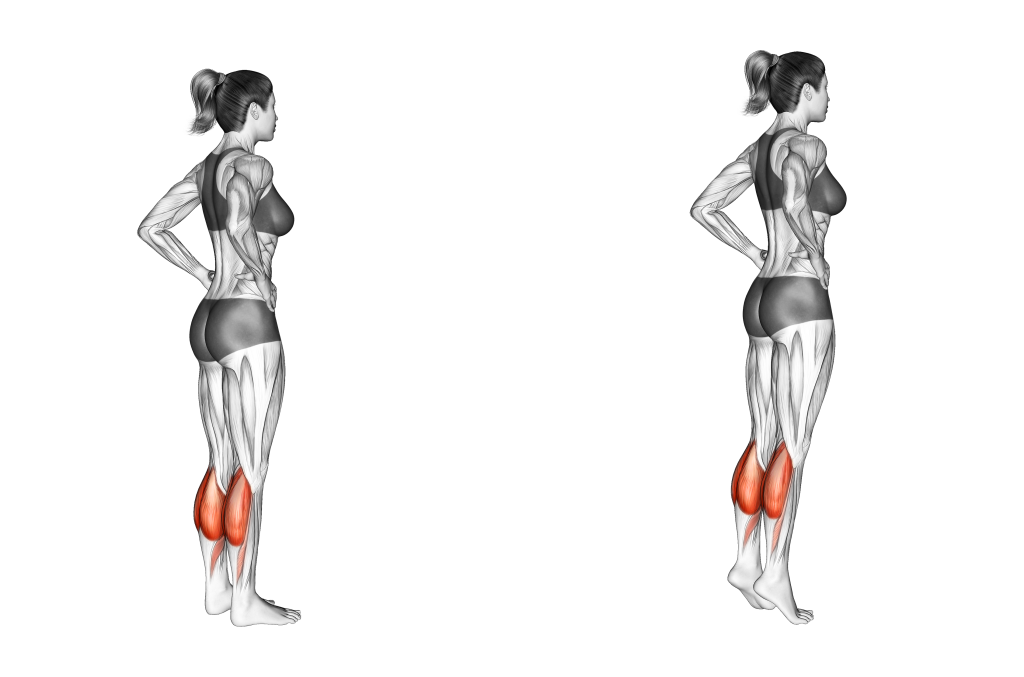
If performing the exercise with weights, they should be gripped evenly in the hands. If elevating the balls of the feet, the heels should be off the platform.
Keeping the knees bent as little as possible, the lifter then raises their heels upwards by contracting their calves, standing on the balls of their feet.
Once the feet are fully extended, the lifter then slowly reverses the motion until the heels have returned to their original position.
This completes the repetition.
2. The Seated Calf Raise
As the name implies, seated calf raises are simply calf raises performed while seated. This can make performing the exercise difficult with body weight alone, and as such is primarily done as a weighted exercise.
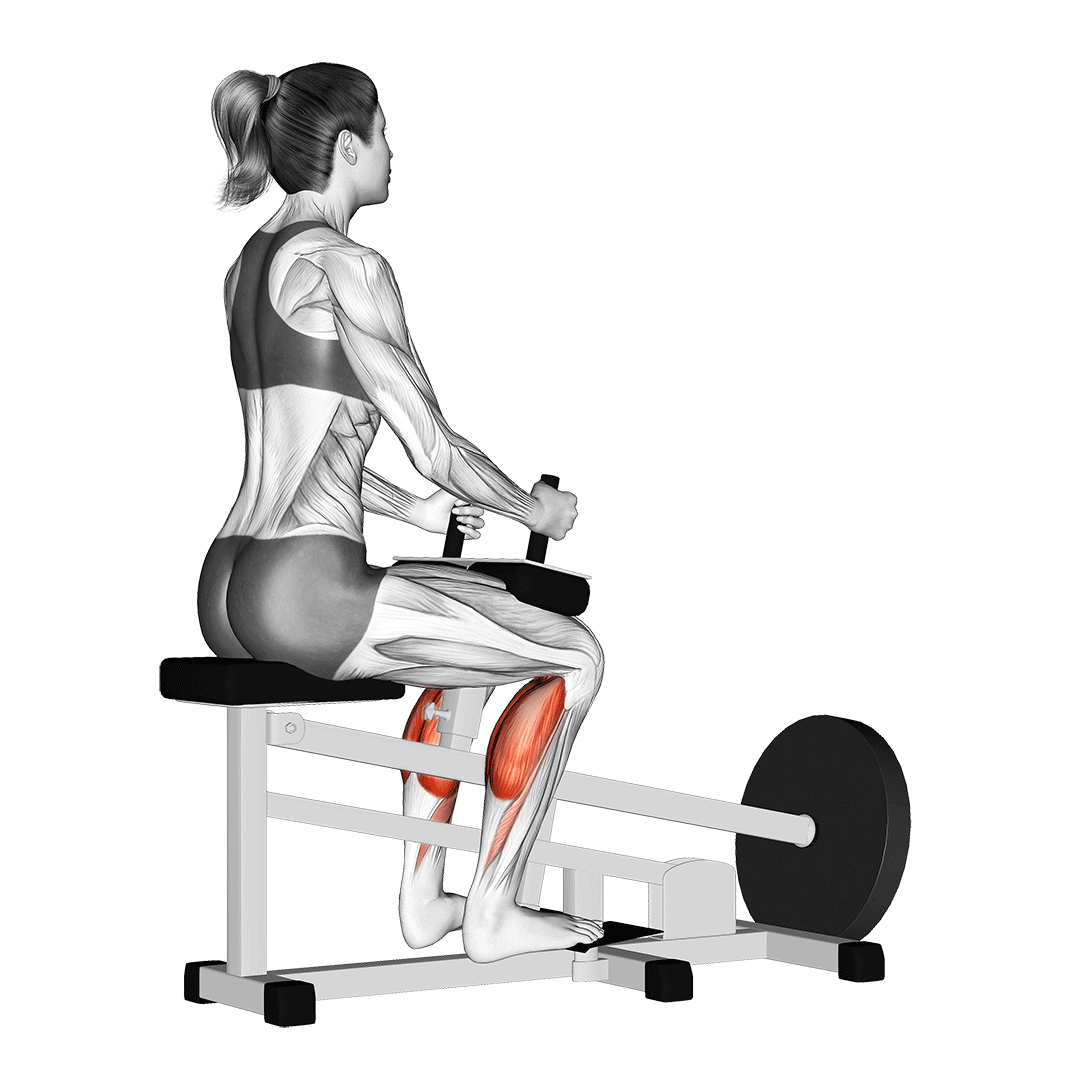
Apart from including weights atop the knees, the seated calf raise should also elevate the balls of the feet so as to ensure a full range of motion is achieved.
Equipment Needed
Seated calf raises will require a seat, free weights, and an object to elevate the toes several inches off the ground.
Benefits as a Calf Raise Variation
Seated calf raises are ideal for avoiding stress on the knees or spine, as may be the case for lifters performing the standing variation with significant weight.
In addition, because the lifter is in a seated position, less attention needs to be paid to properly balancing and aligning the upper body.
How-to:
To perform a repetition of the seated calf raise, the lifter will sit atop an exercise bench with weights atop their knees, elevating the balls of their feet with the heel hanging off the platform.

Beginning the repetition with the heels slightly lower than the toes, the lifter will contract their calves and raise them until reaching a full range of motion.
To complete the rep, the lifter then simply lowers their heels back to the starting position.
3. The Single-Leg Calf Raise
Single-leg calf raises are a unilateral variation of calf raise where the lifter stands on one leg, using the other half of the body solely for support.
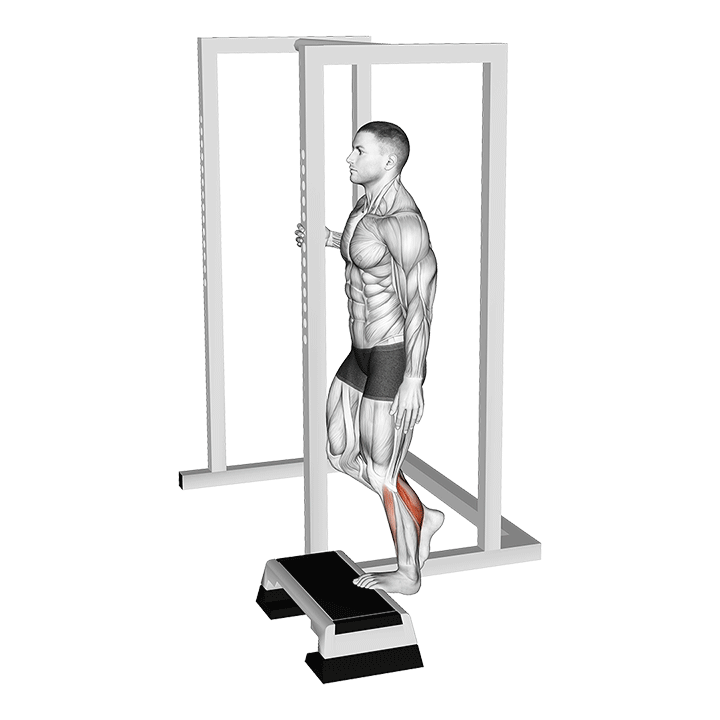
Like most other unilateral exercises, the single-leg calf raise is quite effective at isolating muscles to a further extent than its two-legged counterparts.
Equipment Needed
It is best to perform single-legged calf raises with the forefoot elevated off the ground. This may be done with weight plates, a yoga block or a plyometric box.
In addition, if performing the exercise with weights, selecting dumbbells or kettlebells will allow for an easier time balancing in comparison to barbells.
Benefits as a Calf Raise Variation
With only one leg being trained at a time, the single-leg calf raise allows the lifter to divert more attention and energy to truly isolating their calf muscles.
How-to:
As one can guess from its name, single-leg calf raises are quite literally conventional standing calf raises performed on one leg.
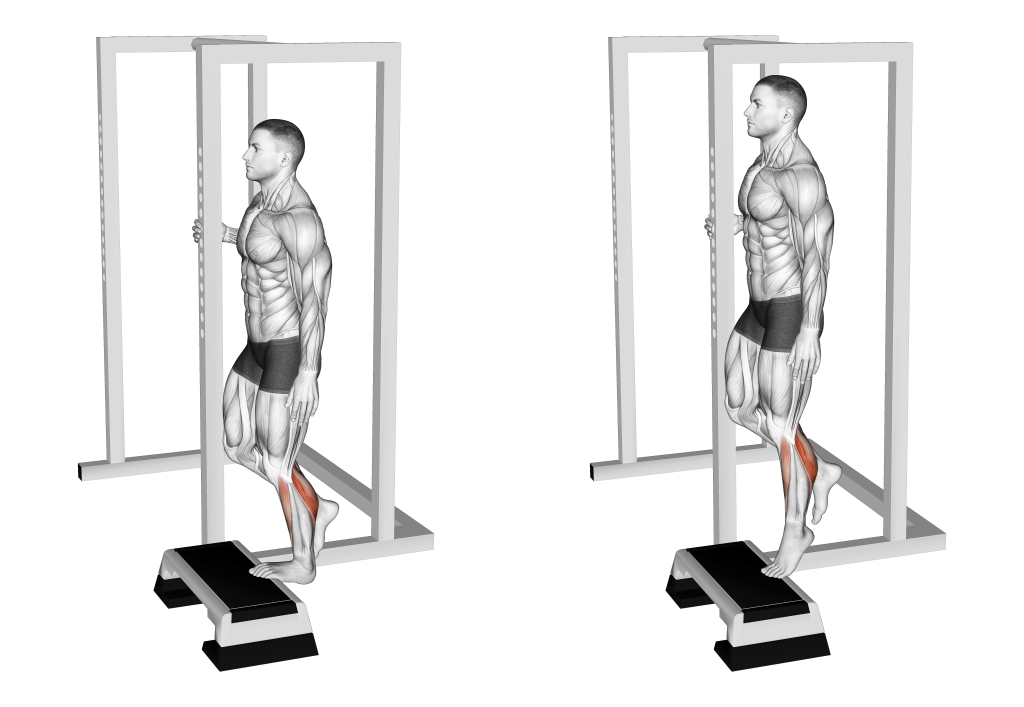
To perform this variation, the lifter will elevate their forefoot off the ground, raising the other in the air and extending one arm away for support.
If performing the exercise with weight, it should be gripped on the same side as the working leg.
Once positioned appropriately, the lifter then contracts their calf muscles and rolls onto the balls of their foot.
The repetition is considered complete when the heels return to their original elevation.
4. The Reverse Calf Raise
Reverse calf raises are a form of calf raise with the halves of the feet placed in reverse.
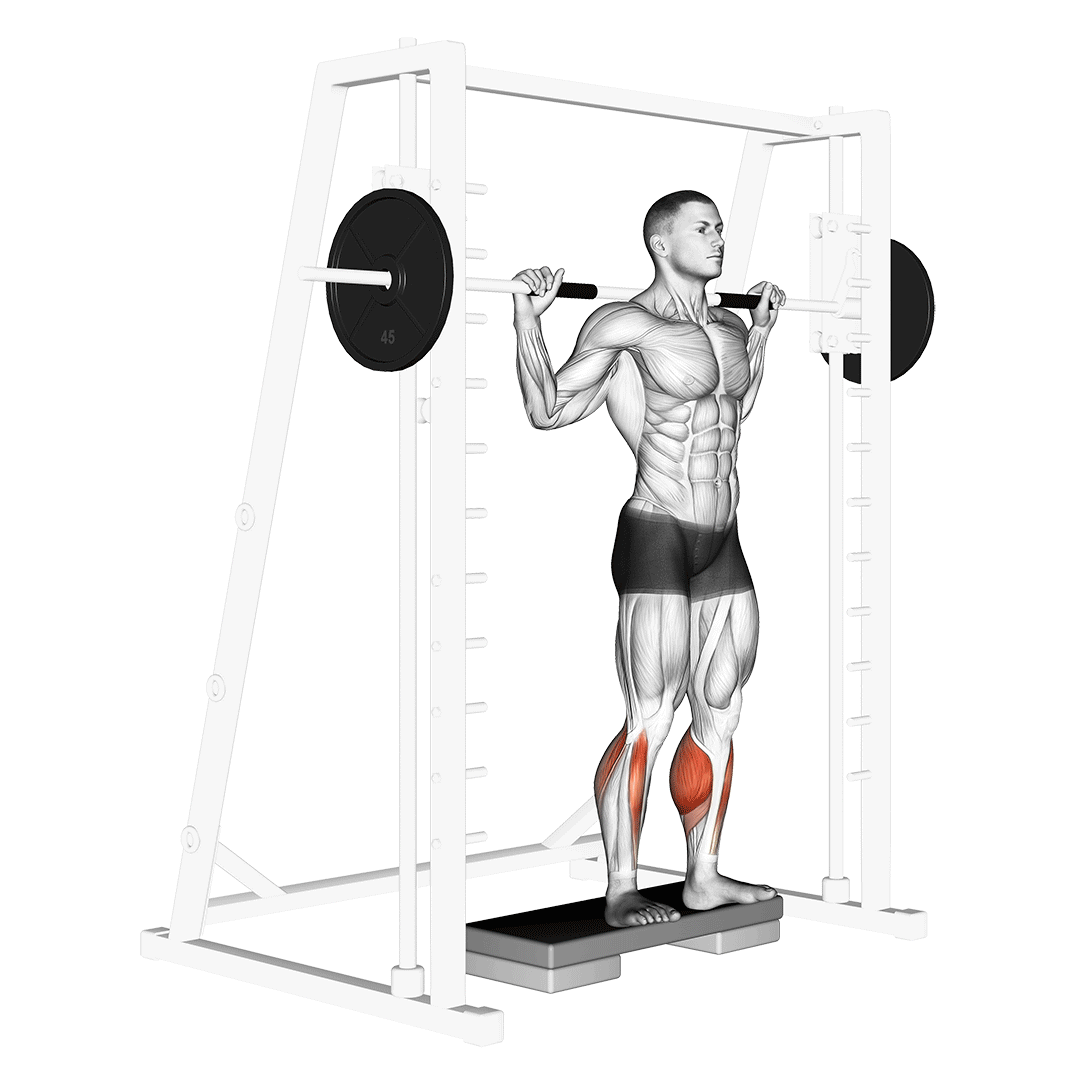
Rather than drawing the heels upwards, the exercise requires the lifter to instead raise the forefoot upwards as the heels remain stationary.
Reverse calf raises target the more often forgotten section of the calf muscles - that being the tibialis anterior.
Runners and individuals who regularly experience foot drop will benefit the most from reverse calf raises.
Equipment Needed
Like conventional calf raises, the reverse calf raise can be made more intense by gripping weights. In addition, the heels will need to be elevated by a platform; A weight plate or box is perfect for this.
Benefits as a Calf Raise Variation
The tibialis anterior is surprisingly under-trained by most workout programs - a mistake, considering the importance of the muscle.
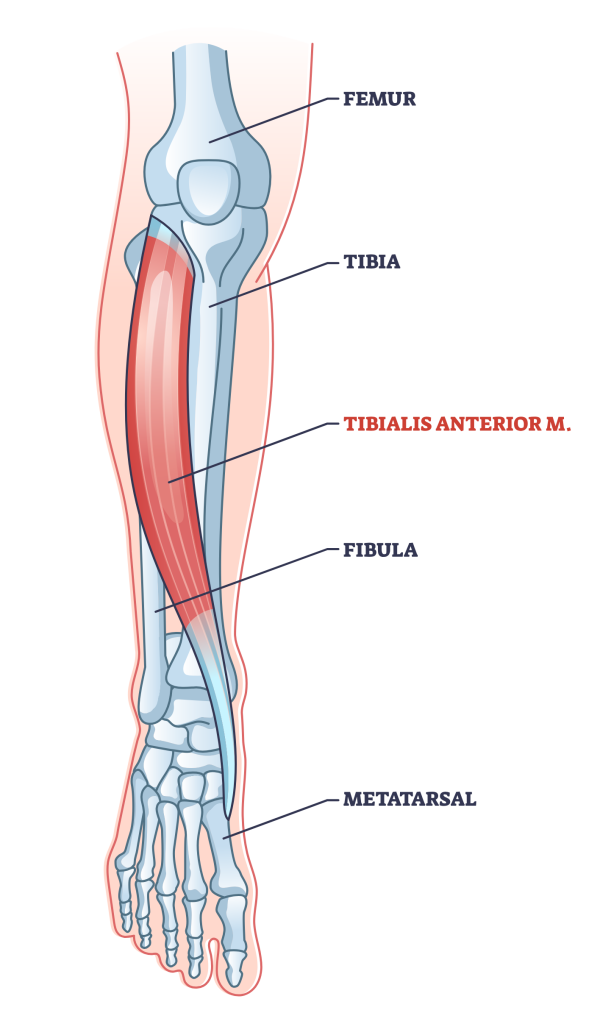
Reverse calf raises have been used to correct foot drop syndrome in runners, to recover from shin splints and to improve the overall muscular definition of the calves.
How-to:
To perform a repetition of the reverse calf raise, the lifter will position their heels atop an elevated platform, allowing their forefoot to hang off the edge. The knees and hips should remain fully straight throughout the exercise.
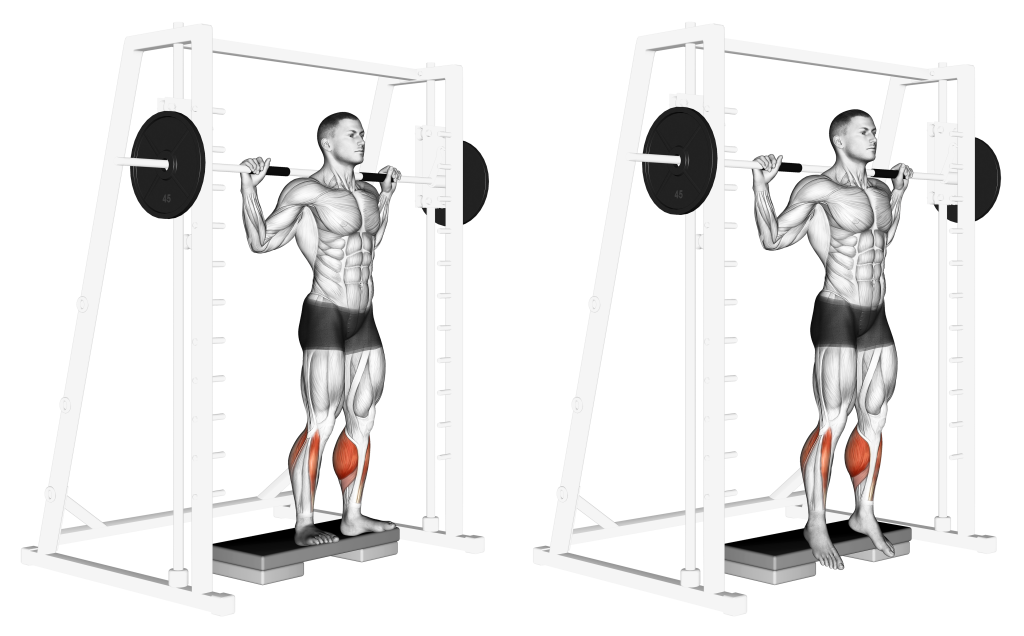
If performing the exercise with weights, grip them in both hands. Otherwise, stretch arms out for support.
With the forefoot hanging off the edge, the lifter will contract their calf muscles and raise their toes towards their shins, maximizing the range of motion as much as possible.
Once the terminal point of the repetition has been reached, the repetition can be completed by simply lowering the forefoot back down.
5. The Calf Raise Machine
For greater versatility, safety and stability, performing calf raises with the use of its namesake machine is your best bet.

The majority of calf raise machines will place the lifter in a standing position with the balls of their feet atop an elevated platform, often with a pair of shoulderpads distributing resistance from the top of the body.
Because the weight is placed atop the shoulders when using a calf raise machine, this particular variation may be unsuitable for individuals with poor spine, knee or hip function; In such cases, try the seated calf raise variation instead.
Equipment Needed
Apart from requiring a calf raise machine, lifters may also need a set of weight plates, depending on whether the machine features its own weights or not.
Benefits as a Calf Raise Variation
As a machine-based exercise, the machine calf raise is far easier to adjust and modify to meet a lifter’s training needs. In addition, the resistance is self-stabilizing, allowing more energy to be exerted towards dynamic contraction of the calf muscles.
How-to:
To perform a calf raise with a calf raise machine, the lifter will place the balls of their feet atop the elevated platform around hip-width apart, allowing their heels to dip off the edge. The shoulderpads should be balanced evenly atop the shoulders, handles gripped if available.
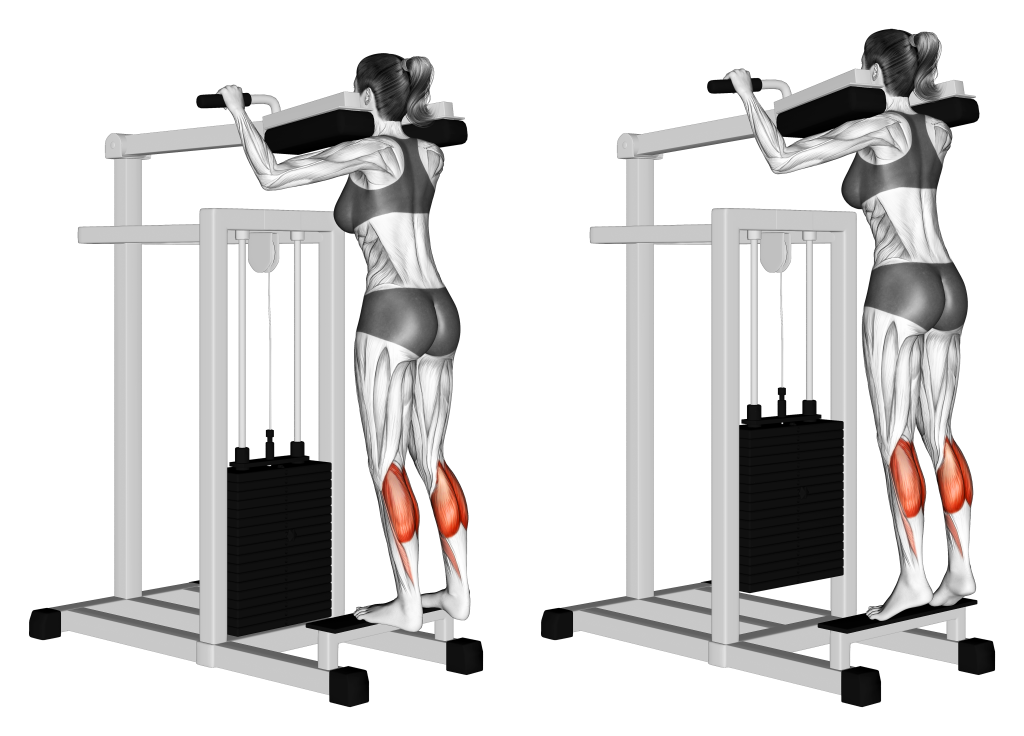
From this position, the lifter rolls onto their toes and raises their heels as high as mobility allows.
Once reaching the limit of their range of motion, the lifter then lowers their heels to complete the repetition.
6. The Leg Press Calf Raise
An unconventional but nonetheless effective variation - the leg press calf raise is quite literally a calf raise performed with the use of a leg press machine.
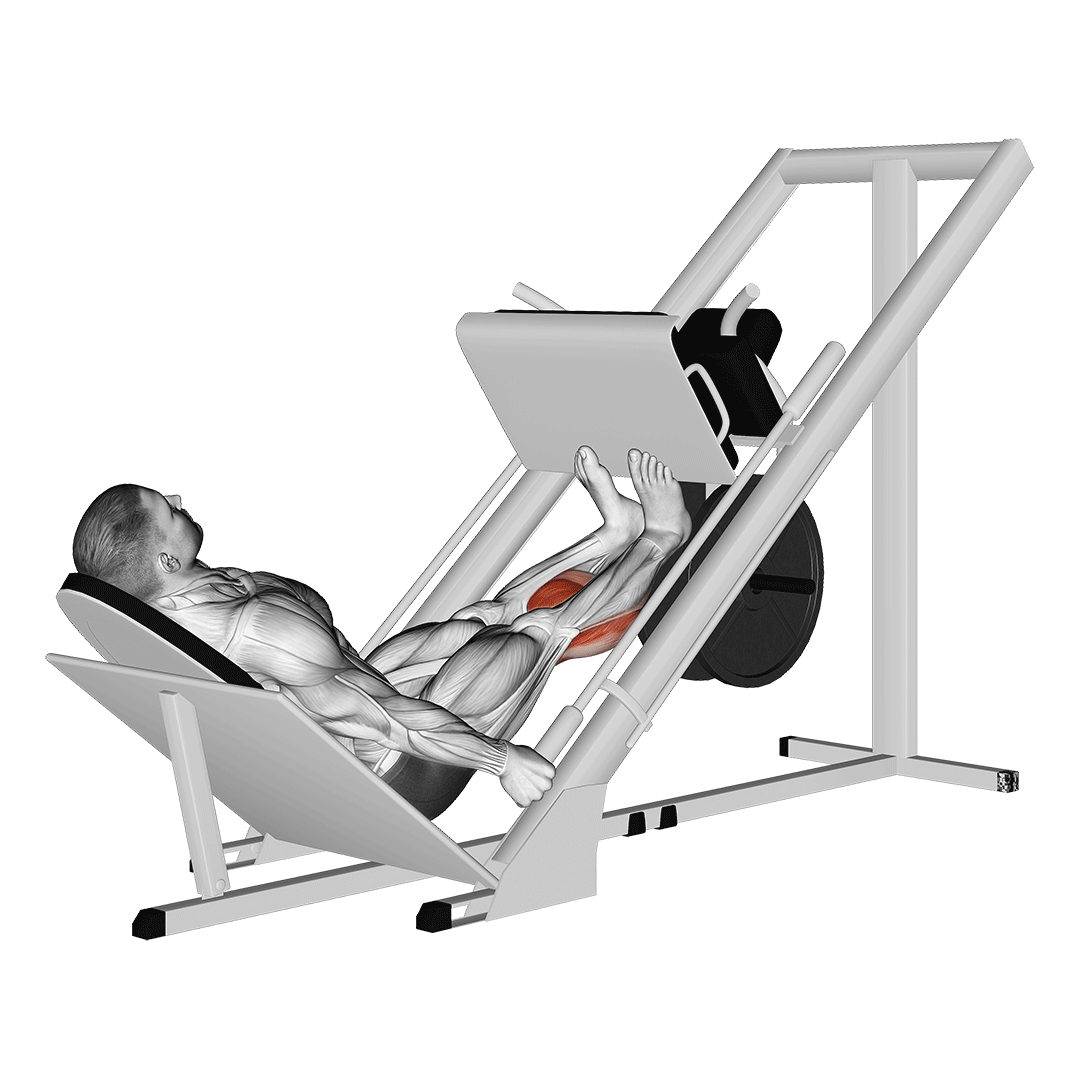
While a normal leg press repetition involves squatting the plate towards the body, the calf raise will only involve the ankles and otherwise keep the knees straight.
Because the leg press is performed in a semi-inverted position, it can be the perfect alternative to the machine calf raise when one is not available - or if the lifter cannot place a load on their back.
Equipment Needed
The leg press calf raise will require a leg press machine and a set of weight plates.
Benefits as a Calf Raise Variation
Apart from being an excellent substitute for machine calf raises, the leg press calf raise also targets the calves from a unique angle that most other variations do not.
How-to:
To perform a repetition of the leg press calf raise, the lifter will seat themselves within the leg press machine, forefoot placed along the base of the sled with the heels suspended off of it. The toes should be pointing in the same alignment as the ankles, with the feet spaced around hip-width apart.
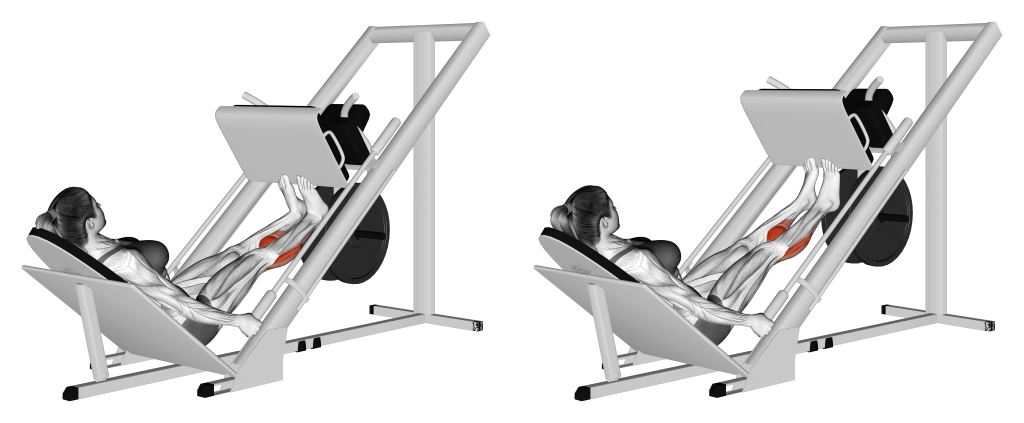
Keeping the knees straight, the lifter will then disengage the safety lock of the leg press and drive through their toes, pushing the sled away from them.
Once the feet are fully extended, the lifter reverses the motion so as to complete the repetition.
7. The Smith Machine Calf Raise
Yet another machine-based calf raise variation; performing calf raises with a smith machine can be quite useful for maintaining balance despite the addition of weight. This is on account of both the machine’s fixed bar path and its self-stabilizing resistance.
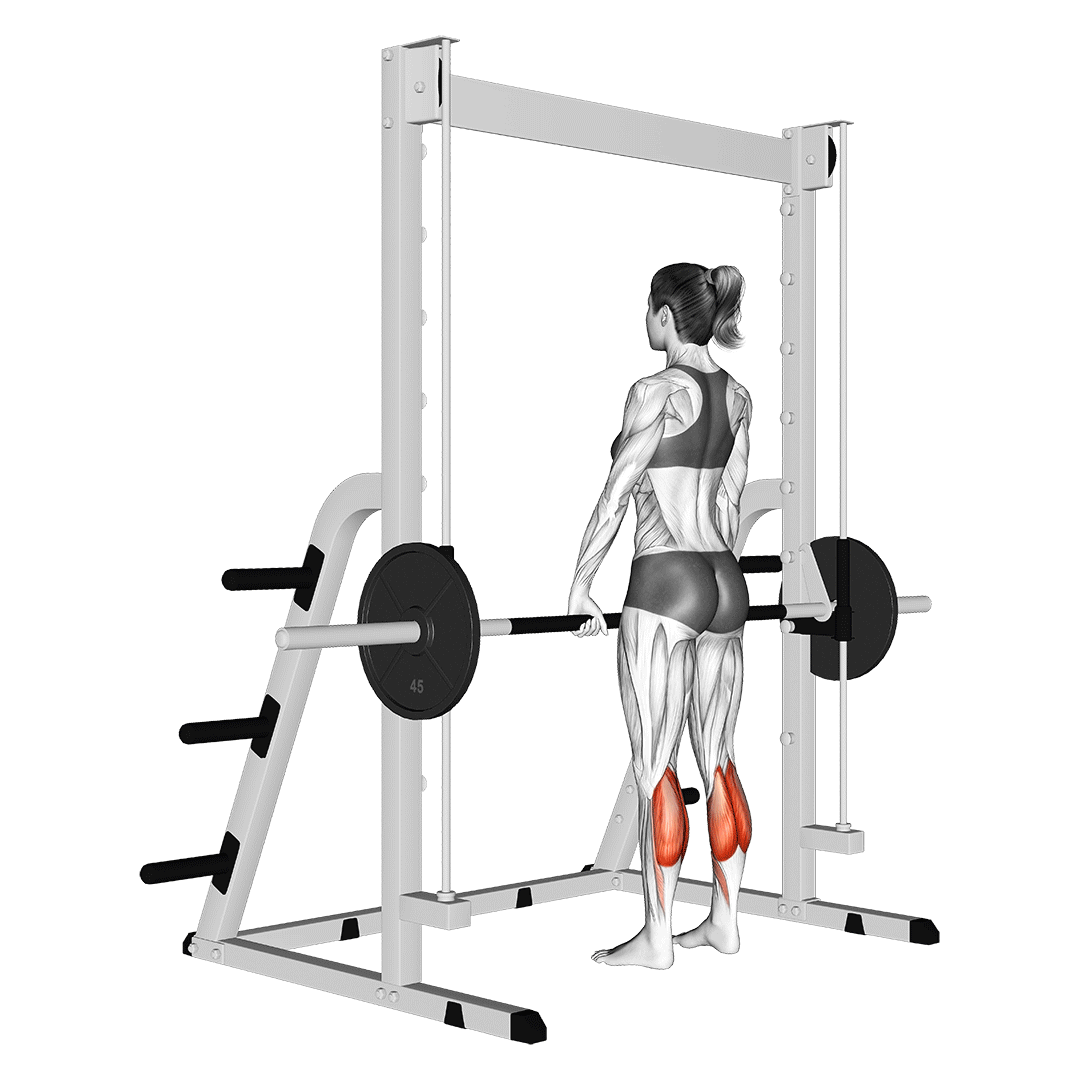
Like the calf raise machine itself, the smith machine variation is performed in a standing position, but can otherwise be performed with the bar held behind the body so as to avoid loading the spine.
Equipment Needed
This particular variation will require a smith machine and a set of weight plates. If desired, an elevated platform may also be used.
Benefits as a Calf Raise Variation
Smith machine calf raises feature much the same benefits as any other machine-based calf raise. This includes a greater capacity for weight and resistance, greater accessibility and a relatively lower risk of injury.
Providing the same benefits means that the smith machine calf raise can effectively be used as an alternative to other machine-based variations in a pinch.
How-to:
To perform a smith machine calf raise, the lifter will stand with the bar either loaded atop their back or held behind their body in both hands. The feet should be set hip-width apart, toes pointing forwards.
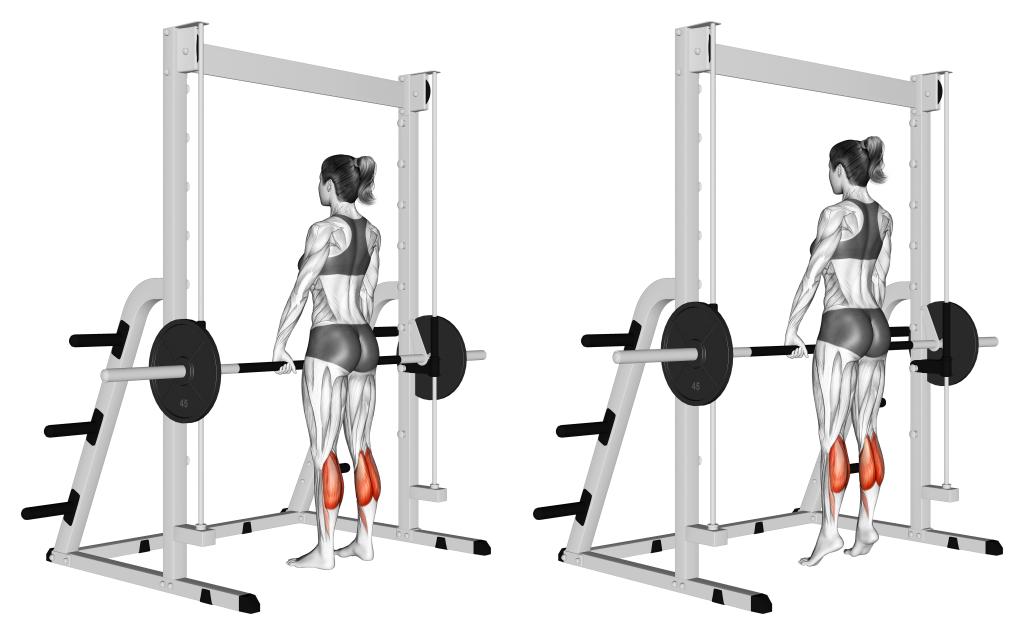
Now in the right stance, the lifter will simply extend their heels upwards, keeping the knees straight as they do so.
Once reaching a full range of motion, the lifter returns their heels to the ground - thereby completing the repetition.
Which Calf Raise is Best?
Like most other types of exercise, there is no single “best” calf raise. Each variation serves its own unique purpose, and it is according to your training goals which one is most suitable.
If pure calves mass and strength is your goal, try out the conventional standing variation. Or, if you wish for a more machine-based stimulus, try the machine calf raise.
References
1. Killer Calves: The Essential Guide to Calf Growth and Development. N.p.: Beastly Body, 2020. Amazon Digital Services LLC - Kdp ISBN: N/A
2. Ema R, Ohki S, Takayama H, Kobayashi Y, Akagi R. Effect of calf-raise training on rapid force production and balance ability in elderly men. J Appl Physiol (1985). 2017 Aug 1;123(2):424-433. doi: 10.1152/japplphysiol.00539.2016. Epub 2017 Jun 1. PMID: 28572499; PMCID: PMC5583613.
